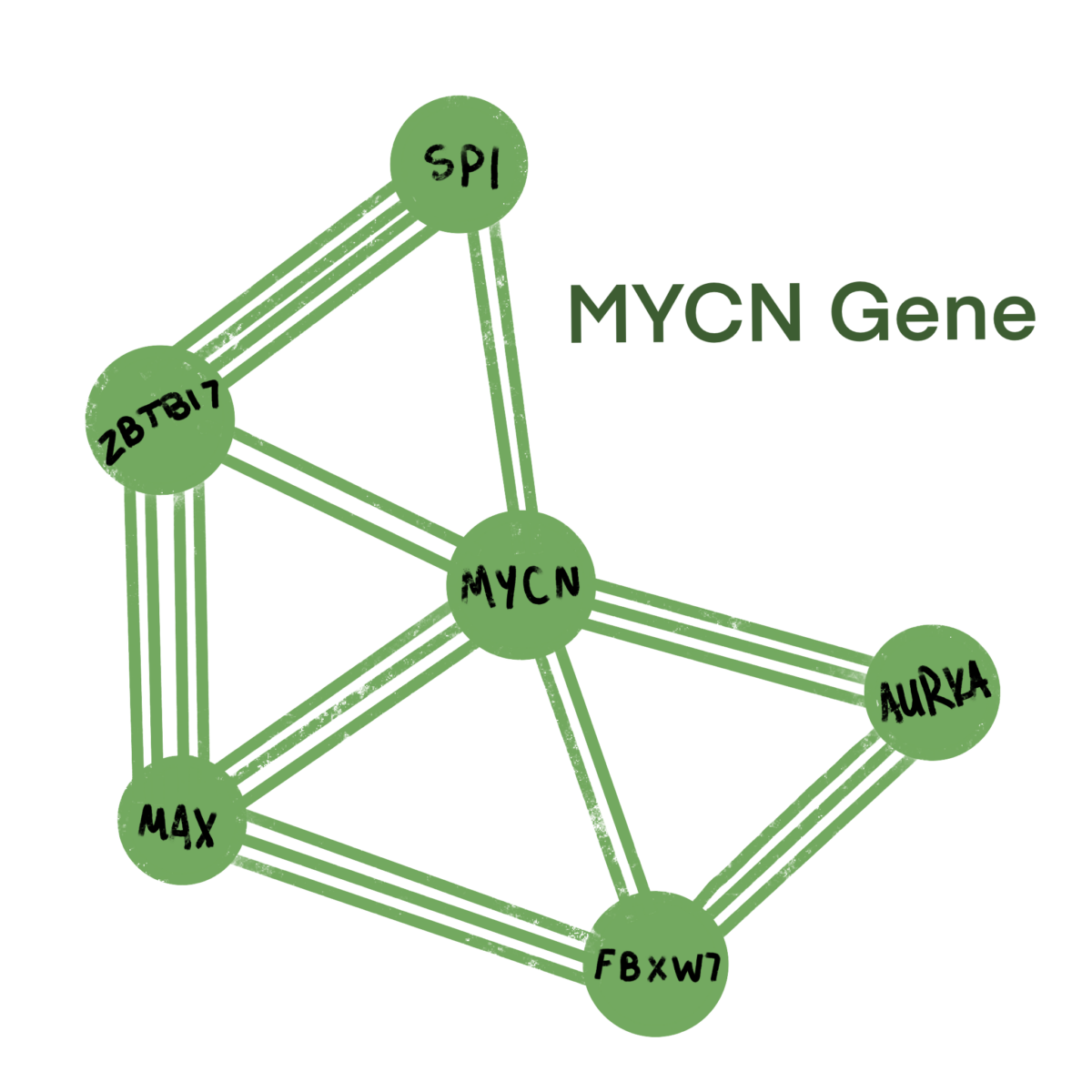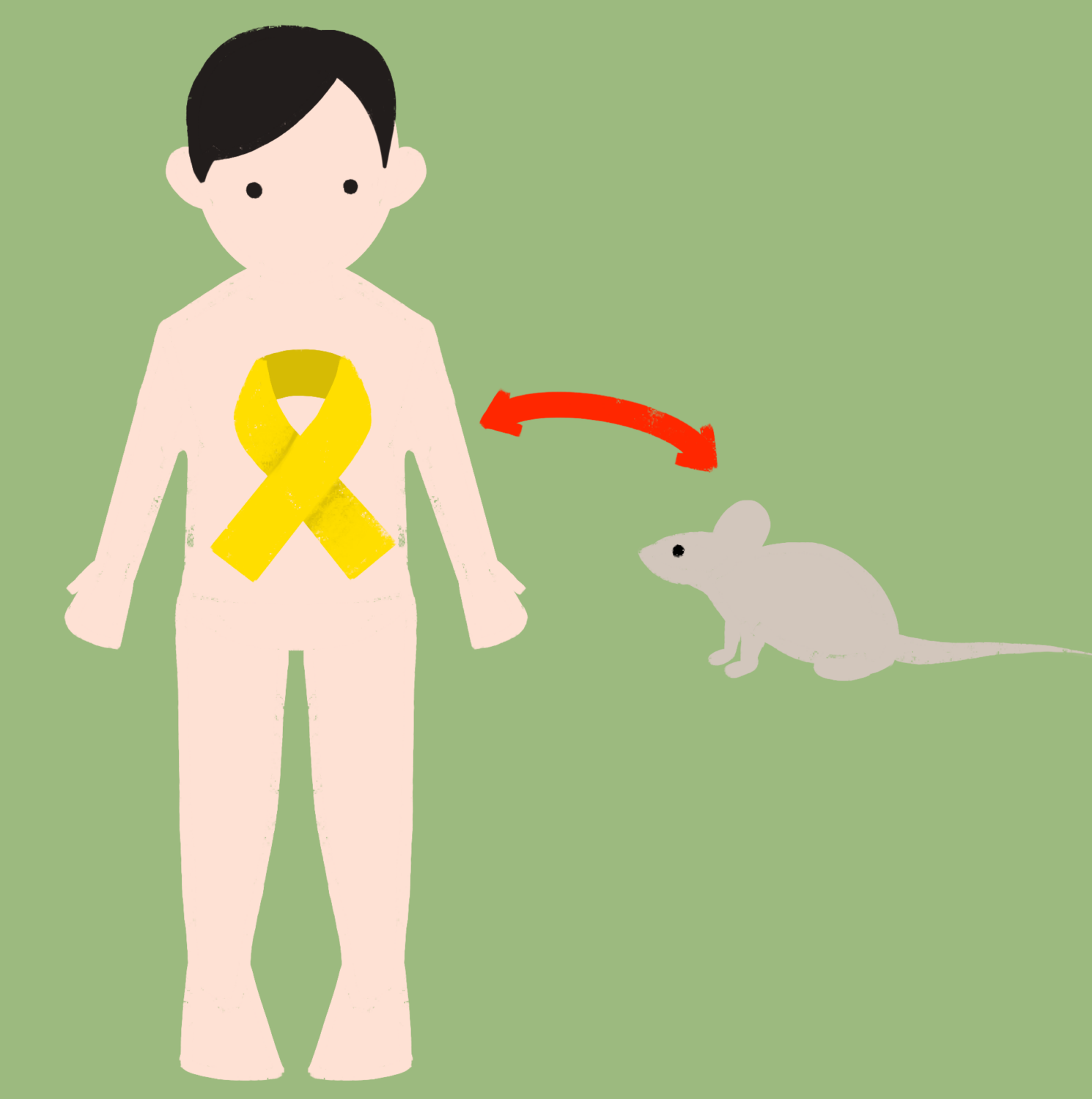When you hear the word cancer, you probably associate it with a family member, a friend, or even yourself. With more than 200 known types, cancer remains one of the most persistent challenges in medicine. Although chemotherapy and radiation therapy are often considered aggressive treatments for survival, scientists are working with modern technology and animal models to develop more targeted and effective therapies.
Cancer occurs when cells replicate abnormally, divide uncontrollably, and invade healthy tissue. These abnormal cells group together to form tumors that may spread throughout the body. In cancer research, animal models—including zebrafish, mice, dogs, and even horses—are useful for understanding how cancer develops, the role of certain genes and gene mutations, and in the creation and testing of drugs and other treatments. Mice are especially useful because they have many of the same biological features as humans and have over 80% of identical genetic components, according to the National Human Genome Research Institute.
Dr. Amy LeBlanc, a veterinary oncologist at the National Cancer Institute, studies cancer in both mice and dogs. Mouse models are “good at prioritizing and filtering what looks really promising while adding a level of rigor before testing [drug combinations] in dog models…to eliminate the one-off or the outlier,” she said.
LeBlanc’s research on dogs focuses on osteosarcoma., a “highly malignant and metastasizing” bone cancer common among older dogs. Osteosarcoma also occurs in humans—it’s a rare bone cancer in children and young adults. Dogs are a good animal model because they often share the same environment as humans, contain similar immune systems, and have a comparable natural medical history. LeBlanc’s discoveries may one day help both dogs and people.
Other scientists are relying on genetically engineered mice to test the effectiveness of cancer drugs. Professor Louis Chesler, a pediatric cancer researcher at The Institute of Cancer Research in London, is trying to develop new drugs for the two most common solid tumors in children—neuroblastoma, a nerve tumor, and medulloblastoma, a brain tumor. He conducted trials in mice using the drug momelotinib and found that it decreased tumor progression and increased survival rates. But in humans, the treatment didn’t work as well.
Dr. Sumana Shrestha, a member of Chesler’s team, is working on novel therapeutics that target the MYCN oncogene, a key driver in many childhood cancers. MYCN is vital for cell growth, division, and self-destruction of cells (apoptosis). When MYCN is overexpressed, tumors become more aggressive, she said. In studies using mice with brain tumors, she found that inactivating MYCN reduces tumor growth rates. In addition, she added, cancer cells need glucose and oxygen to survive. These key metabolic components interact with genes such as MYCN to drive tumor growth. Depriving tumors of those nutrients may impair cancer metabolism, starving the cancer and slowing its ability to divide and spread. Shrestha emphasized that there is no magic bullet for cancer, and that understanding the complex, interlinked processes of development, metabolism, and cell-cycle regulation is essential to improving outcomes for young patients.

As the fight against cancer continues, LeBlanc, Chesler, Shrestha, and other scientists will continue to rely on modern technology and animal models in their quest for better and more targeted cancer treatments.
- There are more than 200 types of cancer.
- Mice have many of the same biological features as humans.
- MYCN oncogene is a key driver in many childhood cancers.
- Scientists rely on new technologies and animal models on their quest to fight cancer.
Sources
LeBlanc, Amy. Interview conducted by Sara Barakat on September 7, 2023
Shrestha, Sumana. Interview conducted by Sara Barakat on September 6, 2023
Burns, K., “Cultivating research on cancer in dogs, from clinical trials down to the molecular level,” American Veterinary Medical Association, March 13, 2023; https://www.avma.org/news/cultivating-research-cancer-dogs-clinical-trials-down-molecular-level#.ZA939Hi86K4.twitter
Chesler, Louis, The Institute of Cancer Research, London. (n.d.). Retrieved September 30, 2023, https://www.icr.ac.uk/our-research/researchers-and-teams/professor-louis-chesler
Fishman, J., Ten Have, T., Casarett, D., “Cancer and the Media: How Does the News Report on Treatment and Outcomes,”Arch Intern Med. 2010 Mar 16;170(6):515–518; https://www.ncbi.nlm.nih.gov/pmc/articles/PMC4255973/
Federico, S., Brenan, R, Dyer, M.A., “Childhood Cancer and Developmental Biology: A Crucial Partnership,” Curr Top Dev Biol. 2011;94:1–13; https://www.ncbi.nlm.nih.gov/pmc/articles/PMC3551576/
Gu, W., et. al., “The Role of Feedback Loops in Targeted Therapy for Pancreatic Cancer,” Front Oncol. 2022 May 16;12:800140; https://www.ncbi.nlm.nih.gov/pmc/articles/PMC9148955/
Huang, M., & Weiss, W. A. “Neuroblastoma and MYCN,” Cold Spring Harb Perspect Med. 2013 Oct 3(10):a014415; https://www.ncbi.nlm.nih.gov/pmc/articles/PMC3784814/
Institute of Cancer Research, London, Research projects—The Institute of Cancer Research, London. (n.d.); https://www.icr.ac.uk/our-research/research-divisions/division-of-clinical-studies/paediatric-solid-tumour-biology-and-therapeutics/research-projects
LeBlanc, Amy K., Senior Scientist, Molecular Imaging Branch, Center for Cancer Research, National Cancer Institute, Retrieved September 30, 2023; https://irp.nih.gov/pi/amy-leblanc
Liberti, M, Locasala, J., “The Warburg Effect: How Does it Benefit Cancer Cells?”Trends Biochem Sci. 2016 Jan 5;41(3):211–218; https://www.ncbi.nlm.nih.gov/pmc/articles/PMC4783224/
Mukae, K. et.al., “Development of an osteosarcoma model with MYCN amplification and TP53 mutation in hiPS cell‐derived neural crest cells,” Cancer Sci. 2023 Feb 3;114(5):1898–1911; https://www.ncbi.nlm.nih.gov/pmc/articles/PMC10154822/
National Cancer Institute, “Comparative Oncology Program” (n.d.), Center for Cancer Research; https://irp.nih.gov/pi/amy-leblanc
National Cancer Institute Staff, “Helping Dogs—and Humans—with Cancer: NCI’s Comparative Oncology Studies,” July 10, 2019; https://www.cancer.gov/news-events/cancer-currents-blog/2019/comparative-oncology-dogs-cancer-clinical-trials
National Human Genome Research Institute, mouse models, https://www.genome.gov/genetics-glossary/Mouse-Model
Onaciu A., et. al., “Spontaneous and Induced Animal Models for Cancer Research,” Diagnostics (Basel). 2020 Aug 31;10(9):660; https://www.ncbi.nlm.nih.gov/pmc/articles/PMC7555044/
Ruiz-Perez, M.V., Henley, A. B., Arsenian-Henriksson, “The MYCN Protein in Health and Disease,” Genes (Basel). 2017 Mar 30;8(4):113; https://www.ncbi.nlm.nih.gov/pmc/articles/PMC5406860/
Sutherland, A., “Good News for Dogs with Cancer,” Scientific American, December 30, 2019; https://www.scientificamerican.com/article/good-news-for-dogs-with-cancer/?amp
Shrestha, Sumana, “Two Minutes With… Sumana Shrestha—Researcher in translational neurology at University College London, Brain Tumour Research, March 20, 2019; https://www.braintumourresearch.org/media/our-blog/blog-item/our-blog/2019/03/20/two-minutes-with-sumana-shrestha—researcher-in-translational-neurology-at-university-college-london
Editorial Team
- Chief Editor: Katherine Mi
- Associate Editor: Christine Chen
- Team Editor: Annika Singh
- Image Credit: Sylvia Xu
- Social Media Manager: Chloe Eng
- Social Media Team: Alexis Kim and Ellen Bu
Mentor
- Nadia Jaber is a science writer at the National Cancer Institute at the National Institutes of Health.
Content Expert
Dr. Amy LeBlanc is a veterinary oncologist at the National Cancer Institute.
Dr. Sumana Shrestha is a pediatric cancer researcher at The Institute of Cancer Research.


